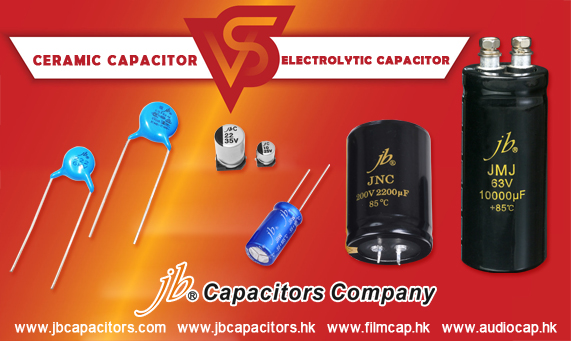jb Capacitors Tell You Difference Between Electrolytic and Ceramic Capacitor

Electrolytic VS Ceramic Capacitor
A capacitor is an electrical component which is able to store electrical charges. Capacitors are also known as condensers. Ceramic capacitors and electrolytic capacitors are two main types of capacitors that are widely used in electrical and electronic components. The ceramic capacitor uses a thin ceramic layer as the dielectric medium whereas the electrolytic capacitor uses an ionic liquid as one of the sheets of the capacitor. In this article, we are going to discuss what electrolytic capacitor and ceramic capacitor are, their properties, and finally a comparison between electrolytic capacitor and ceramic capacitor and summarize the difference between ceramic capacitors and electrolytic capacitors.
What is a Ceramic Capacitor?
In order to understand what a ceramic capacitor is one must first understand what a capacitor is in general. Capacitors are devices that are used to store charges. Capacitors are also known as condensers. Commercially used capacitors are made of two metal foils with a dielectric medium in between them rolled into a cylinder. The capacitance is the main property of a capacitor.
The capacitance of an object is a measurement of the amount of charges that object can hold without discharging. Capacitance is a very important property in both electronics and electromagnetism. Capacitance is also defined as the ability to store energy in an electric field. For a capacitor, which is having a V voltage difference across the nodes and the maximum amount of charges that can be stored in that system is Q, the capacitance of the system is Q/V, when all are measured in SI units. The unit of the capacitance is farad (F). However, as it is inconvenient to use such a large unit, most of the capacitance values are measured in nF, pF, µF and mF ranges.
In a ceramic capacitor, a thin ceramic layer act as the dielectric medium. A ceramic capacitor has no polarity. Ceramic capacitors are classified into three main classes. Class I capacitors have better accuracy and low volumetric efficiency whereas class III capacitors have low accuracy and high volumetric efficiency.
What is an Electrolytic Capacitor?
An electrolytic capacitor is made by having an ionic liquid as one of the conducting plates of the capacitor. Most of the electrolyte capacitors are polarized. This means the voltage at the anode cannot become negative relative to the voltage applied to the cathode. If this happens, the capacitor becomes corrupted by ion exchange. Electrolytic capacitors are famous for having higher volumetric efficiency. This means a small capacitor is able to hold larger amount of charges than a ceramic capacitor of the same size.
What is the difference between Ceramic Capacitor and Electrolytic Capacitor?
• Ceramic capacitor has two metal sheets at the terminals to store charges. The electrolytic capacitor has one metal sheet and an ionic liquid as the two terminals.
• Electrolytic capacitors are capable of holding more charges per volume than ceramic ones.
• Most of the electrolyte capacitors are polarized, but ceramic capacitors are never polarized
From jb Capacitors Company sales department
Learn more Imformation:https://www.jbcapacitors.com/

